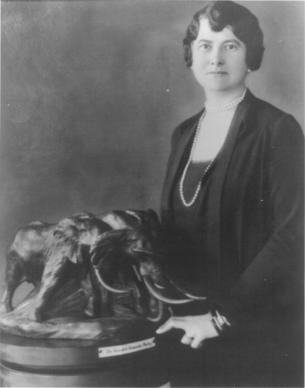Mary Akeley (Mary Lenore Jobe Akeley)

Mary Akeley was born to Richard Watson and Sarah Jane Pittis Jobe on 29 January 1878. She grew up on her parents’ farm in Tappan, Ohio and graduated from Scio College, Ohio. After graduation she taught at a public school until 1901 when she joined Bryn Mawr College. She later transferred to Columbia University, New York where she received her Master of Arts degree in 1909 after which she joined Hunter College as faculty in History. Mary Akeley began exploring areas of British Columbia in 1905. In 1907 she traveled for three months in a small party led by Dr. Charles J. Shaw, exploring the Selkirk Mountains. A later expedition, led by Professor Herschel Parker, was the first to set foot on Mount Sanford. By September 1913, she had made six trips exploring British Columbia and studying the Carrier Indians in their villages. In 1913, in an expedition lasting ten weeks and covering over 800 miles, she travelled alone except for an occasional Indian guide hired to take her to the next village. For many of the Indians, she was the first white woman they had ever seen. They promptly dubbed her Dəne tsʼeku, their native language for “Man-Woman,” because of her clothing and straight-forward demeanor. In 1913, while at Hunter College, the Canadian Government commissioned her to study the customs and history of Eskimos and Indian tribes in the Canadian Northwest. While studying and photographing the native tribes in the region, she explored regions of the Canadian Rockies and mapped the Fraser River in 1914, and in 1915 discovered and mapped the then unnamed and unexplored Mount Sir Alexander locally known as Big Ice Mountain, making two unsuccessful attempts to ascend the peak. She was nominated as a fellow of The Royal Geographic Society of London and was awarded a membership in the American Geographical Society for her work in this period. She was also an early member of the American Alpine Club. Mount Jobe was renamed in her honor by the Geographic Board of Canada in 1925.
In 1914, Mary Akeley purchased a 45 acre parcel of land in Mystic, Connecticut to set up Camp Mystic – a summer camp for girls. The camp was conducted annually from 1916 and open to girls aged eight to eighteen. Akeley’s philosophy behind the camp was that “girls of today have a right to freedom, health, and happiness.” The camp frequently hosted renowned explorers who spoke of their adventures and travels to the girls. In 1930, the camp was closed due to the Great Depression. The tract of land that housed Camp Mystic is now open to the public as a Peace Sanctuary. As a longtime proponent of nature conservation, in 1959 Akeley donated 8 acres of her Connecticut estate to The Nature Conservancy’s Connecticut Chapter. Upon Mary Akeley’s death in 1966, her will established a Peace Sanctuary Trust that leased the 45 acres of property in Mystic, Connecticut to the Thames Science Center, a New London, Connecticut-based conservation organization. In 1984, the 8 acre tract of land donated to The Nature Conservatory was returned to the care and ownership of Akeley’s trustees, who in turn established the unified property as the “Peace Sanctuary.” The property was the subject of much activity during the time that it was under the care of the Thames Science Center. The preserve was the site of several botanical and ornithological research studies and was a popular field trip destination for local schools: the cost of admission was fifty cents per child and free for teachers. In 1968, over 2,200 adults and students attended any of the 61 programs the Sanctuary offered, including guided tours and day camps for children in the summers. Boy Scout and Girl Scout Troops were also frequent visitors at Peace Sanctuary to work on merit badges or to help maintain the grounds as part of their community service. The property still stands today as a wooded wildlife retreat open to the public.
Born
- January, 29, 1878
- USA
- Tappan, Ohio
Died
- July, 19, 1966
- USA
- Mystic, Connecticut
Cemetery
- Patterson Union Cemetery
- Deersville, Ohio
- USA



